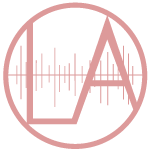
Suppose you are interested in making voice over a career. In that case, it’s very important to purchase the right equipment to give you a leg up and remain competitive against thousands of other actors. While raw talent, training, and business sense are essential factors to success, your voiceover equipment can also play a significant role.
Using inexpensive equipment can be acceptable at the very outset of your career. However, to make considerable strides in booking big-budget jobs and ongoing projects, good quality equipment can make a difference in your business. We’ve talked about how to choose a microphone and the factors to look for. Now, we will look at two more important pieces of equipment for a voiceover home studio, preamps, and headphones.
Microphone Preamps for Home Recording
A digital interface is crucial when recording quality voice over using a computer. A digital interface is a form of technology that connects multiple pieces of equipment. It allows hardware devices to communicate with one another and accept audio and video in various forms. XLR microphones require a digital interface. Both are connected and used to convert the audio (your voice or music) into analog and into a form that can be heard and edited on the computer.
Can’t I Just Use a USB Microphone?
Yes, you can. It is much simpler to use and relatively cheaper to purchase. A USB mic is a microphone that connects straight into your computer, mobile device, or tablet, and the recording interface is built into the mic. No other equipment is required, and you can produce quality recordings.
Why An XLR Microphone?
An XLR mic has a port on the bottom to connect to an XLR cable. That cable then connects to your digital interface and then to your computer. It’s a seamless approach that provides better quality sound. XLR microphones are more expensive to set up initially, that’s true. You will need a microphone, digital interface, cables, and a computer. You will also need to install drivers or a control panel for the interface. Digital interfaces allow you to record various types of audio, not just voice over. Most interfaces come with multiple ports so you can connect to other mics or instruments.
Voiceover Equipment Sound Quality
Using a digital interface and XLR mic, the sound quality you get is second to none. A USB Mic’s resolution is 16-bit 44.1/48 kHz sampling rate. Using an XLR mic with a digital interface allows for a resolution of 24-bit, and up to 192 kHz sampling rate. There are many digital interfaces on the market to choose from. Here is a list of two popular options:
- The Focusrite Scarlett Solo 3rd Gen USB Audio Interface is USD 190. This is the pre-amp I use every day and the most popular on the market. I started my career with this interface and haven’t yet upgraded because I’m still so happy with it. At a reasonable price point, this interface has terrific quality and performance. It contains a gain button and an additional input port for instruments.
- The Apollo Twin MK11 (Solo, Duo, Quad) is USD 1110. Serious professionals use this preamp because of its advanced features and heavy price tag, and they are considered the best audio interface for home studios. The solo, duo, and quad have varying levels of plugins, and the solo has the least, which is why independent voice actors favor it.
Stick with a more reasonably priced preamp if you’re just starting in voiceover. If you decide to make voiceover a full-time career and want an upgrade, consider the Apollo Twin MK11.
Voiceover Equipment Headphones
I wear my headphones every day and all day when I record and edit my voice over work. I initially started my career using my Mac-built-in computer speakers. Still, a very successful sound engineer told me that I was doing a disservice to my work and that using headphones would make a vast difference in my product quality. That being said, I went straight to my local music store a purchased a good professional-grade pair.
Why not use my mobile phone headphones? Because they are of inferior quality and not capable of hearing all the beautiful nuances that your voice delivers. If you plan on making voice over a career, it’s crucial to invest in professional headphones and nothing in-ear. In-ear headphones offer inaccurate bass frequencies because of the size of the driver.
It’s essential to get an authentic portrayal of what your voice sounds like, and that can only be done with over-the-ear headphones. Ok, no problem at all. I can use my BeatsbyDre then, you might say. Uh, no! Noise-canceling headphones are also not advisable. They play extra noise through the headphones to counteract the noise outside, therefore not accurately portraying what you’re hearing. They are also costly for no reason. Pass! 🙂
Professional Headphone Options
Bluetooth headphones are also not advised as they could pick up interference with neighborhood sounds and traffic passing your home, especially if you live in an urban area. Over-the-ear headphones with a wire are the best choice, and here are two options:
- Audio-Technica M40 is USD 140. These are my headphones and have been going strong since I began my voiceover career. The sound is crisp, clean, comfortable, articulate, and perfect for long sessions. They get the job done and, thankfully very sturdy as I’ve dropped them too many times to remember.
- Sennheiser HD 630VB is USD 250. You can never go wrong by purchasing a Sennheiser product. These are amazing high-quality closed-back, over-the-ear headphones, and they provide clear, detailed sound and have a variable bass boost option.
Voiceover Equipment You Can Count On
Whichever digital preamp interface and studio headphones you decide to purchase will be determined by your budget and goals. You’ll never make a mistake if you take your time doing thorough research. Happy hunting.
